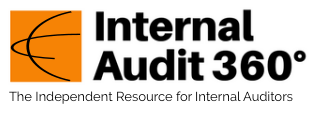
In baseball, a utility player is one of the team’s most valuable assets—an individual who can step into one of several fielding positions during a game to help secure a win. Utility players are valued not only for their varied skills but for their adaptability, resilience, and broad game knowledge, whether filling in for teammates, adjusting to new strategies, or handling high-pressure moments.
In many ways, the internal audit profession is evolving to require the same mindset at major league internal audit teams. As organizations grow and risk factors shift rapidly, internal auditors are encouraged to perform like utility players to bring value to the business. Internal auditors should be capable of rotating into different roles, understanding diverse functions, understanding risks from management perspectives, and bringing this unique insight back to the audit team.
Here, we’ll explore how structured rotation programs can help internal audit departments develop that utility player mindset—and why doing so is a strategic advantage for both internal auditors and the organizations they serve.
Understanding Rotation Programs in Internal Audit
Whether formal or informal, rotational assignments typically allow internal auditors to gain exposure to different areas of the organization and develop a deeper understanding of business operations by temporarily taking on a different role. These rotations can last from a few months to a few years and provide hands-on experience in first-line areas such as operations, finance, or IT, as well as second-line functions like compliance, risk management, and cybersecurity.
There are several types of rotation models:
- Outbound Rotations: Auditors are temporarily placed in operational or business roles to gain exposure and practical understanding.
- Inbound Rotations: Employees from other functions temporarily join the audit department to lend their subject matter expertise and gain an assurance perspective.
- Cross-Audit Rotations: Auditors rotate between specialties—such as IT, operations, financial, or compliance auditing. This type of rotation enhances their ability to connect the dots across functions and promotes a more holistic audit approach amongst the team.
- Project-Based Rotations: Auditors are assigned to cross-functional or strategic projects outside of audit, allowing them to collaborate with various departments, contribute to high-impact initiatives, and gain broader insight into organizational priorities.
Regardless of the format, rotation opportunities are a powerful way to build organizational knowledge, foster collaboration, and enhance audit quality.
Benefits to Internal Audit Departments
Rotational programs aren’t just a development tool; they are an investment into a stronger strategy. Like a utility infielder who knows every corner of the diamond, auditors who’ve seen multiple angles of the business bring sharper instincts and stronger results. Here’s what that looks like on the field:
- Sharper Business Sense: Auditors who rotate through operations gain a real-world view—not just theory. This helps them move beyond checklist audits to deliver practical, strategic insights.
- Better Risk Spotting: Experience across functions sharpens risk instincts. Diverse backgrounds mean auditors catch emerging threats faster and keep audit relevant in a complex world.
- Stronger Stakeholder Bonds: Rotations build trust. When auditors know the business and have relationships, resistance fades and collaboration grow. They become natural ambassadors for audit’s value.
- Talent Growth & Retention: Rotation programs keep top performers engaged and growing. They offer clear career paths, boost job satisfaction, and help build a strong leadership pipeline.
- Leadership Ready: Rotations identify and prep future leaders with a broad, enterprise-wide perspective. This cross-training builds resilience and sharpens leadership across the organization.
Benefits Outside of the Audit Function
While there are numerous intrinsic benefits to rotational programs, they also deliver significant external advantages that extend beyond the audit team, including:
- Stronger Risk Culture: By embedding auditors into the business, rotation programs promote a proactive risk culture. Operational teams gain firsthand appreciation for internal controls, governance, and audit methodology, by learning to think like an internal auditor. This leads to stronger ownership of controls and better alignment between first, second, and third lines of defense.
- Collaboration Between Functions: Rotation programs foster cross-functional collaboration and reduce siloed thinking. When audit professionals work in partnership with business units, they often uncover root causes of issues that go beyond individual processes—driving more effective and holistic solutions. By rotating throughout the business, auditors can learn firsthand how far issues spread.
- Enhanced Workplace Flexibility: Rotational experiences build a workforce that is more adaptable and resilient. As auditors gain diverse insights across departments, they help break down barriers and create a shared language around risk and controls. This collective understanding enables faster, more coordinated responses to emerging challenges and opportunities across the organization.
Challenges of Internal Audit Rotation Programs
Just like a baseball team needs a solid game plan to successfully shuffle players between positions without losing momentum, implementing rotation programs demands careful strategy and strong leadership. While the benefits of rotation programs are compelling, making them work in practice requires thoughtful planning and executive support. A couple of considerations include:
- Talent Gap Risks: When top internal auditors participate in rotations, their temporary absence can impact on audit plan execution. Effective capacity planning and prioritization are essential to ensure critical audit activities continue without disruption.
- Role Clarity and Independence: Clear expectations must be established for rotated auditors and host departments to ensure alignment of key objectives and expectations. This clarity helps maintain the auditor’s independence and prevents confusion about roles and responsibilities.
- Cultural Resistance: Some departments may be hesitant to host auditors, and some auditors may feel uncomfortable stepping outside their usual roles. Addressing this resistance requires proactive change management and strong executive sponsorship to foster acceptance and support across the organization.
Best Practices for Successful Rotation Programs
Rotation programs have huge upside but without a solid foundation, these opportunities can stall, frustrate participants, and fail to deliver real value. Here are the three critical building blocks the team can’t afford to skip:
- Secure Executive Sponsorship: Like an audit plan, support from the C-suite is critical to achieving your objective. Full support from the C-suite and audit committee is critical—they must champion the program and cut through organizational red tape.
- Set Timelines and Return Paths: Make sure all parties know exactly how long the rotation lasts and what the process is for coming back into audit (or vice versa). Clear guardrails keep people motivated and the program running smoothly.
- Be Vocal About Success: Document what participants learned and how the business benefited, celebrating these with the organization. Also, promote success stories on how rotation experiences have contributed to career growth and improved audit performance.
The All-Around Player
Just as a utility player contributes to major victories by offering adaptability, depth, and strategic versatility, internal auditors who take advantage of rotation opportunities become indispensable to their organizations. These newly adaptive skills not only benefit the individual auditor by broadening their perspective and expertise, but also significantly strengthen the audit team by enhancing collaboration, driving innovation, and increasing the team’s overall agility in responding to emerging risks and organizational needs. Over time, this adaptability fosters a more resilient and future-ready internal audit function, while also producing goodwill throughout the business. ![]()
Jesse M. Laseman, CIA, CFE is an internal audit consultant at Sikich with nearly 10 years of experience in financial services, government, and not-for-profit sectors, specializing in operational audits, internal controls, data analytics, and Sarbanes-Oxley (SOX) compliance.

